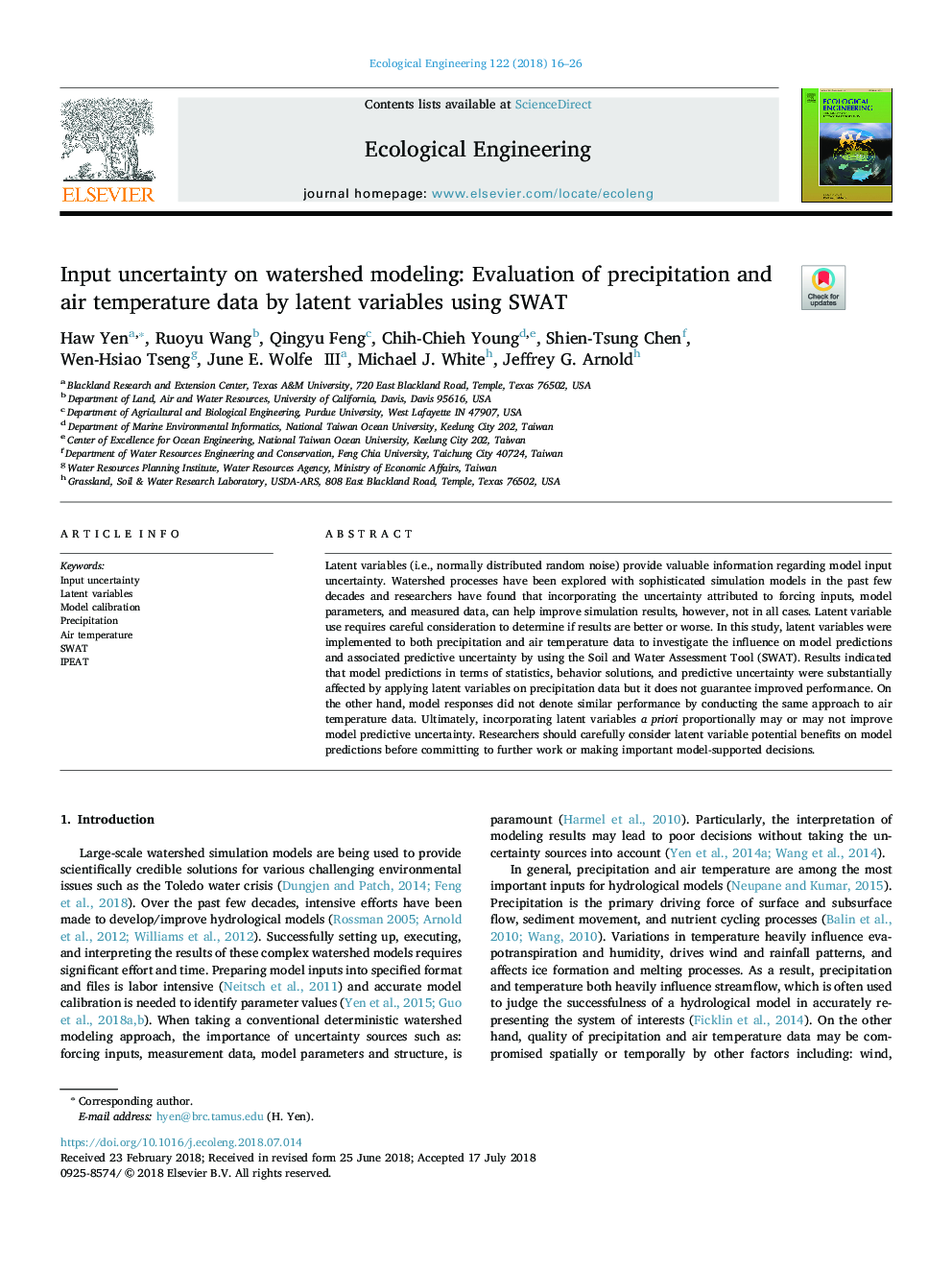| Article ID | Journal | Published Year | Pages | File Type |
|---|---|---|---|---|
| 8847683 | Ecological Engineering | 2018 | 11 Pages |
Abstract
Latent variables (i.e., normally distributed random noise) provide valuable information regarding model input uncertainty. Watershed processes have been explored with sophisticated simulation models in the past few decades and researchers have found that incorporating the uncertainty attributed to forcing inputs, model parameters, and measured data, can help improve simulation results, however, not in all cases. Latent variable use requires careful consideration to determine if results are better or worse. In this study, latent variables were implemented to both precipitation and air temperature data to investigate the influence on model predictions and associated predictive uncertainty by using the Soil and Water Assessment Tool (SWAT). Results indicated that model predictions in terms of statistics, behavior solutions, and predictive uncertainty were substantially affected by applying latent variables on precipitation data but it does not guarantee improved performance. On the other hand, model responses did not denote similar performance by conducting the same approach to air temperature data. Ultimately, incorporating latent variables a priori proportionally may or may not improve model predictive uncertainty. Researchers should carefully consider latent variable potential benefits on model predictions before committing to further work or making important model-supported decisions.
Related Topics
Life Sciences
Agricultural and Biological Sciences
Ecology, Evolution, Behavior and Systematics
Authors
Haw Yen, Ruoyu Wang, Qingyu Feng, Chih-Chieh Young, Shien-Tsung Chen, Wen-Hsiao Tseng, June E. III, Michael J. White, Jeffrey G. Arnold,
